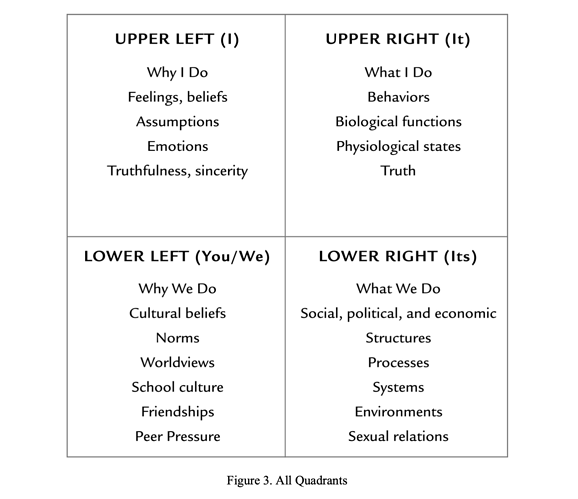I think your point @soulife is right on target. I love this very simple diagram image for school kids.
I say we need to teach people how to learn and how to think … not what to learn and what to think. For our SJW’s and Woke thinkers, although I consider myself both of these things, these Integral Pedagogy ideas of "how to" vs "what to" may not be a comfortable fit?
However, this is an example of the spiritual technologies and integral innovations I have referenced here and elsewhere. Imagine a scene of kids learning about voting. We explain math statistics and how to measure things scientifically. We create a story line for content for a video to share with other teachers.
Integral 1 We introduce a scenario and a work session where kids actually vote. What’s your favorite color - what’s the classes favorite color? We teach mathematics of statistical analysis.
Integral 2 We then introduce some spiritual dissonance like some voted more that once … Now asking is this fair, why or why not? How should this be handled? Require the students to comment as individuals back to the teacher in writing.
After everyone has responded the teacher leads a group discussion based on what was received from the students. Without attaching anything to anyone specifically, discuss the ideas and get everyone in the group to make public comments to find common ground among the collective.
Integral 3 Next we up-level the thinking with deeper integral concepts, like some pressured others to sway their vote … someone threw away someone’s votes … etc. Let the kids integrally sort out these discrepancies on their own, let everyone again weigh in again in writing to the teacher.
Integral 4 Next we introduce these integral complications from the kids written replies and repeat the process. Let the teachers lead with deeper more probing questions to let the class learn how to learn together. Making sure every ones views are accommodated in the discussion.
Please proceed down this integral rabbit hole …. while AI may never answer everything, spiritual/integral AI automating something this can help lead a path toward integral transformation, both as individuals and as collectives. Could this lead to an integral class community/collective view that accommodates everyone’s understanding?
On the topic of Spiritual Technologies, this is just one small integral curriculum that expands on the idea of AIs answering our deepest spiritual questions. Now imagine we all collaborate here together to develop these types of innovations across multiple disciplines and multiple perspectives? Could we do one? Could we do one a month, or even one a week?
If this type of spiritual technology inspires you I want to know because it inspires me too. I’m ready to do something beyond just intellectually analyzing things. Lets become an influential cause and a tool for an integral upgrade for people everywhere. What do you say?
If you’re a real person and this feels right please speak up! ~ Peace 

